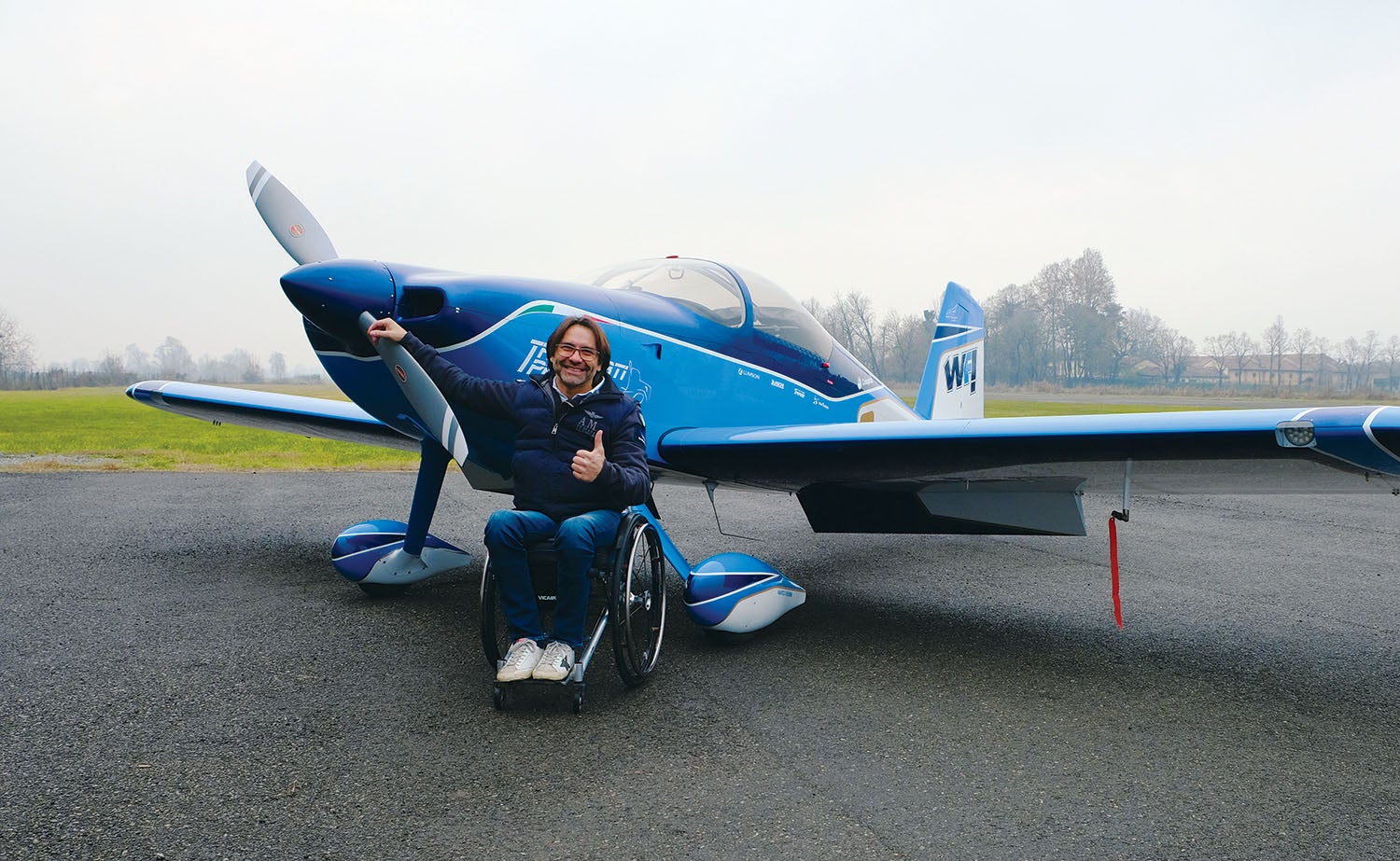
There’s a pilot here in northern Italy who decided to build his own Experimental aircraft. He chose the popular Van’s RV-7, with standard kits for the tail and fuselage, and the quickbuild option for the wings. Like many builders, he struggled for five years working mostly alone, but now the kit is a flying airplane, with lots of stories to tell.
There is nothing special about this progression that happens quite often worldwide, apart the fact that the builder, Marco Cherubini, is a paraplegic because of a car accident in 1995.
Becoming a Pilot
Marco, now 49, has been interested in RC planes since he was a child. (Some of them are still on display in his shop.) In 1995 his life changed completely, so he began a long path to restore himself. In 2001 he met Alessandro Paleri while taking an alpine skiing course.
Alessandro, a quadriplegic since 1987, graduated with a degree in aerospace engineering and is a pilot. His aircraft at that time, a Fly Synthesis Texan ultralight (similar to the LSA category in the U.S.), had special flight controls that he designed and were the subject of his thesis for graduation.
A solid friendship started and one day, in 2003, Alessandro invited Marco for a scenic flight. The joy and freedom of flying are common to all of us, and Marco became hooked from that day. One year later, Marco met up with a team of disabled ultralight pilots and eventually, in 2006, started training to become an ultralight pilot himself.
After his ultralight experience, Marco wanted something more, so in 2012 he began a long path that led to earning his private pilot license. His first license was issued in 2016 with some limitations, but in 2021 he finally earned a pilot license without restrictions.
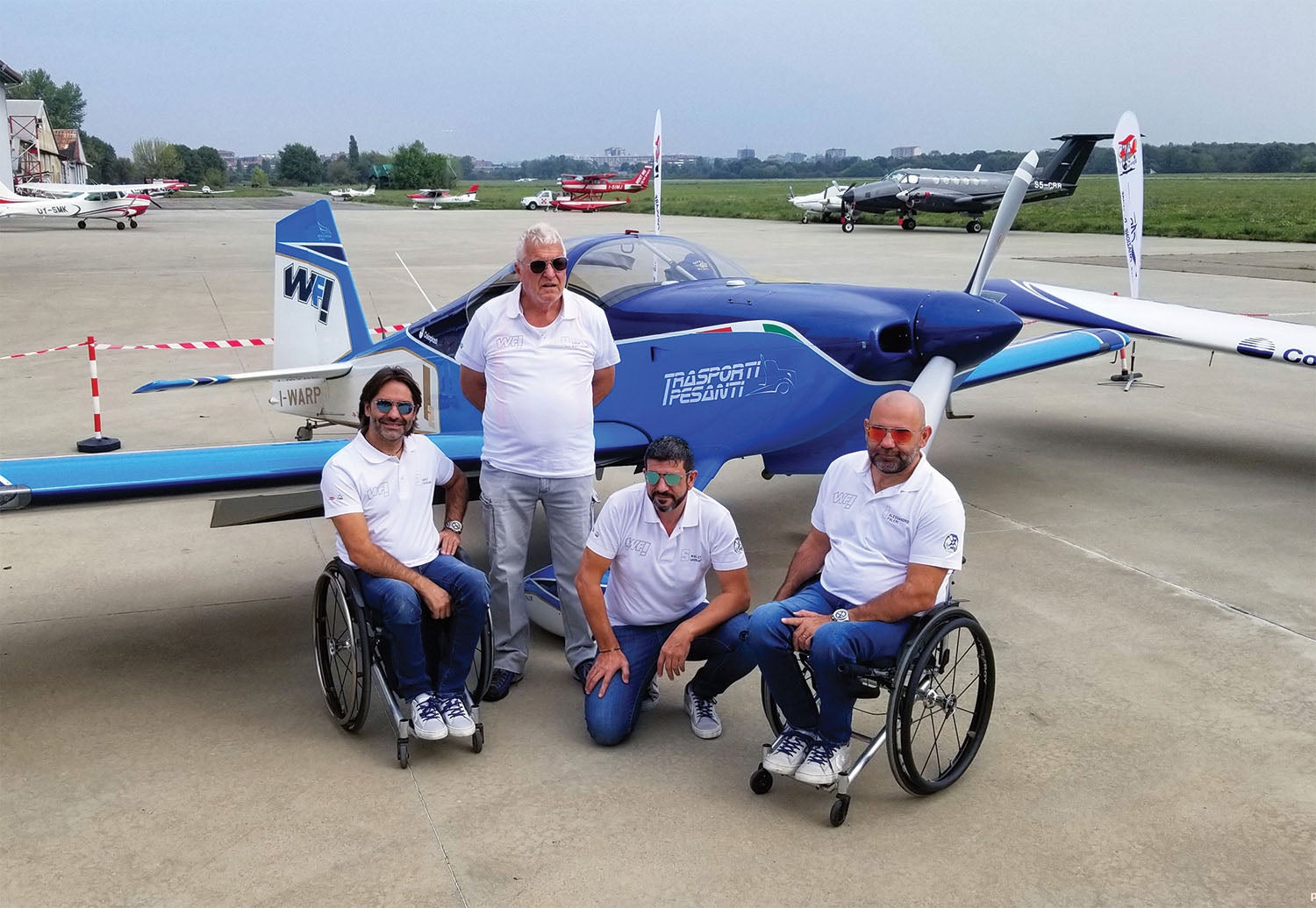
WeFly! Team
A flight school for the disabled, created and managed by Erich Kustatscher, is located near Venice, on a very nice grass field. Marco, after having rented aircraft for quite some time, decided he wanted his own aircraft, so he bought a Texan ultralight. Consequently, Marco started flying together with Alessandro and Erich, and they became interested in formation flight. To begin their training, they called some friends from Frecce Tricolori, the Italian Air Force aerobatic display team, and learned the basics of formation flying. Their skills improved quickly and the WeFly! Team was born. Alessandro is the leader, Marco is the left wingman and Erich is the right wingman and only non-disabled member of the team.
Being the world’s only team of disabled pilots who fly hand-controlled ultralight airplanes, they have had the opportunity to perform during various airshows over the years, like the Royal International Air Tattoo (RAF Fairford, Gloucestershire, England), the ILA Berlin Air Show (Germany) and the Al Ain Airshow (Abu Dhabi, United Arab Emirates).
Another important element is that the WeFly! Team likes to share the flying experience with other disabled persons. To do that, they regularly schedule opportunities for others to experience the joy of flight.
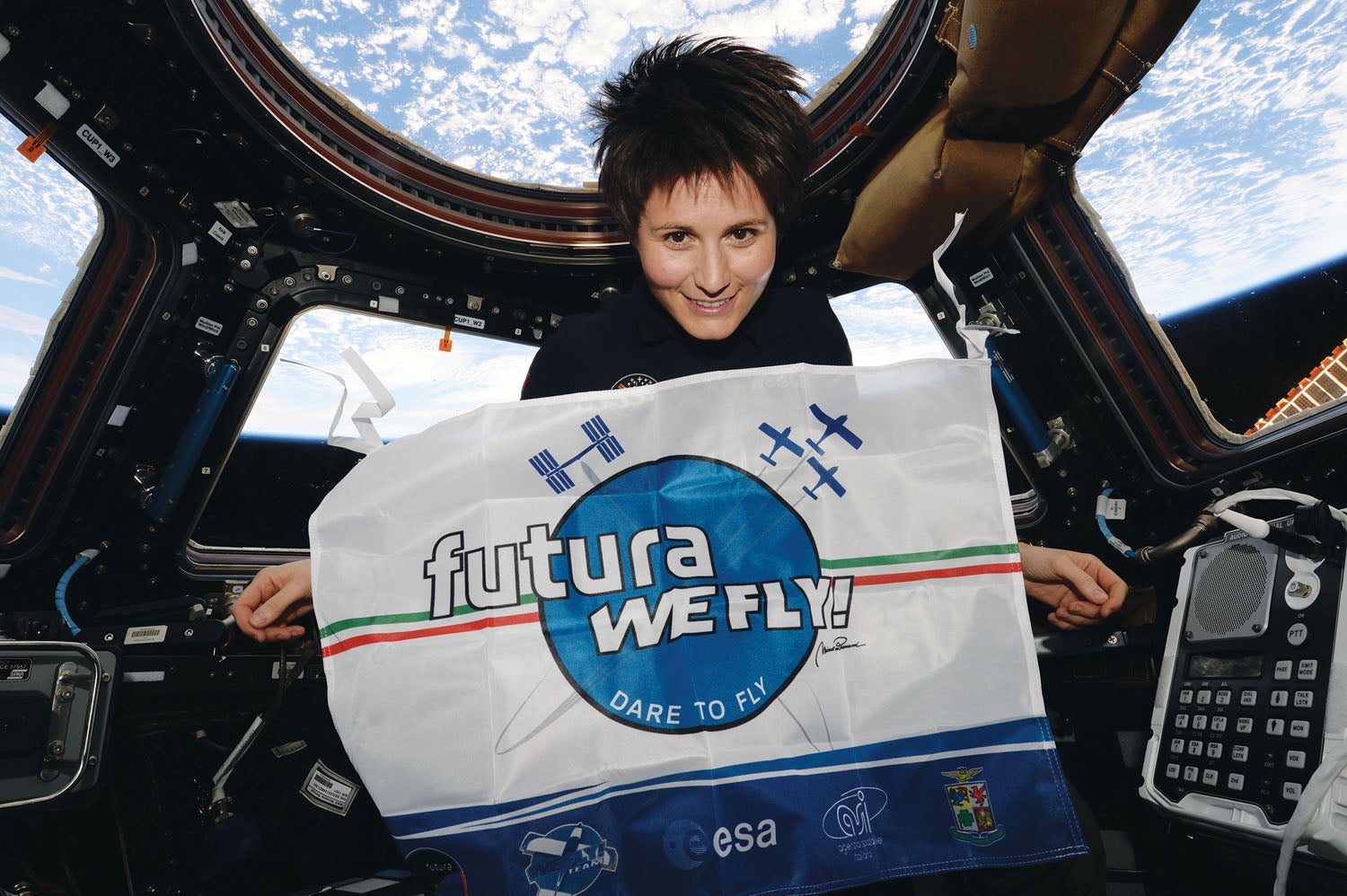
In 2007, during a Women in Aviation gathering at the WeFly! home base, Marco and Alessandro met European Space Agency astronaut Samantha Cristoforetti, and they offered her a flight with the team. Throughout the years, the team built a friendship with Samantha, and they created a special partnership named WeFly and Futura—Dare to Fly, whose goal is to show that by overcoming one’s own challenges and difficulties, it is possible to make one’s dreams come true. Therefore, in November 2014, Samantha brought the WeFly! Team flag and a message dedicated to all disabled people into space during the ISS Futura Mission. See the message:
Looking for more speed and performance, the team moved to Van’s RVs, with Alessandro being the first one to obtain his private pilot license. His RV-7 has the same special controls he designed in the past. Marco wanted an RV too, so he started building his own RV-7 in 2016 and finished it in 2021. He flew it solo for the first time in January, 2022.
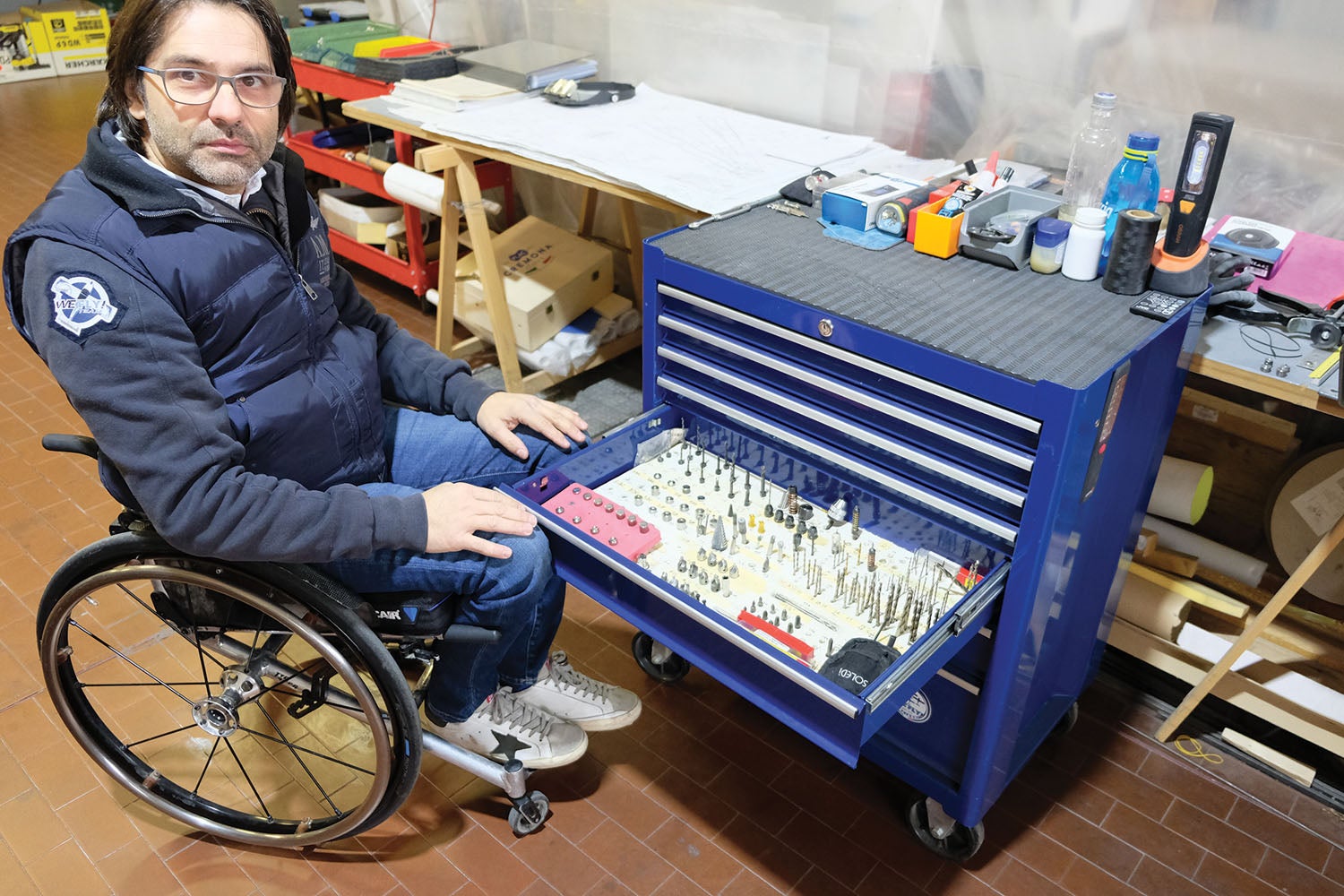
Building the Kit
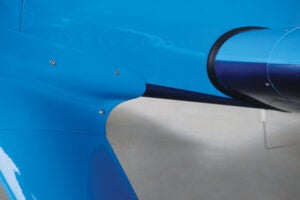
During Marco’s building period, I visited his shop a couple of times and was always impressed by his natural and relaxed approach to building. He has the same passion, the same focused mind, and the same skills that all RV builders must eventually acquire to complete a project of this magnitude. His workmanship is outstanding, with plenty of attention to detail.
Looking at his shop, it is clear that Marco carefully positioned aircraft parts, hardware, tools and everything else to avoid unnecessary movements. Think about the building actions you make around the shop, then imagine what it must be like to work from a wheelchair, braking and unbraking the chair every time you need to move to a different location to accomplish even the smallest task.
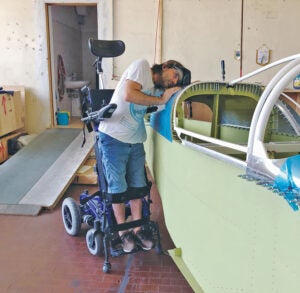
To make things a bit easier, Marco used a fuselage rotisserie, and his tool chest is methodically organized so he can easily find things. Another item he used for his special building needs was a robust, electric-powered, adjustable wheelchair that gave him the ability to stand up. Most of the time he worked alone and only had someone assist him with tasks that probably all builders need help with.
Marco wanted to improve the design of his flight controls, starting with the affordable concept developed by Alessandro, so he learned how to use the EAA member benefit SolidWorks CAD software. Thanks to that, he was able to draw all the parts in 3D in a very detailed way and know how they moved together and how some tight spaces could be optimized for his special flight-control arrangement. In this way, he was able to prepare everything in advance and to think through solutions while staying at his desk.
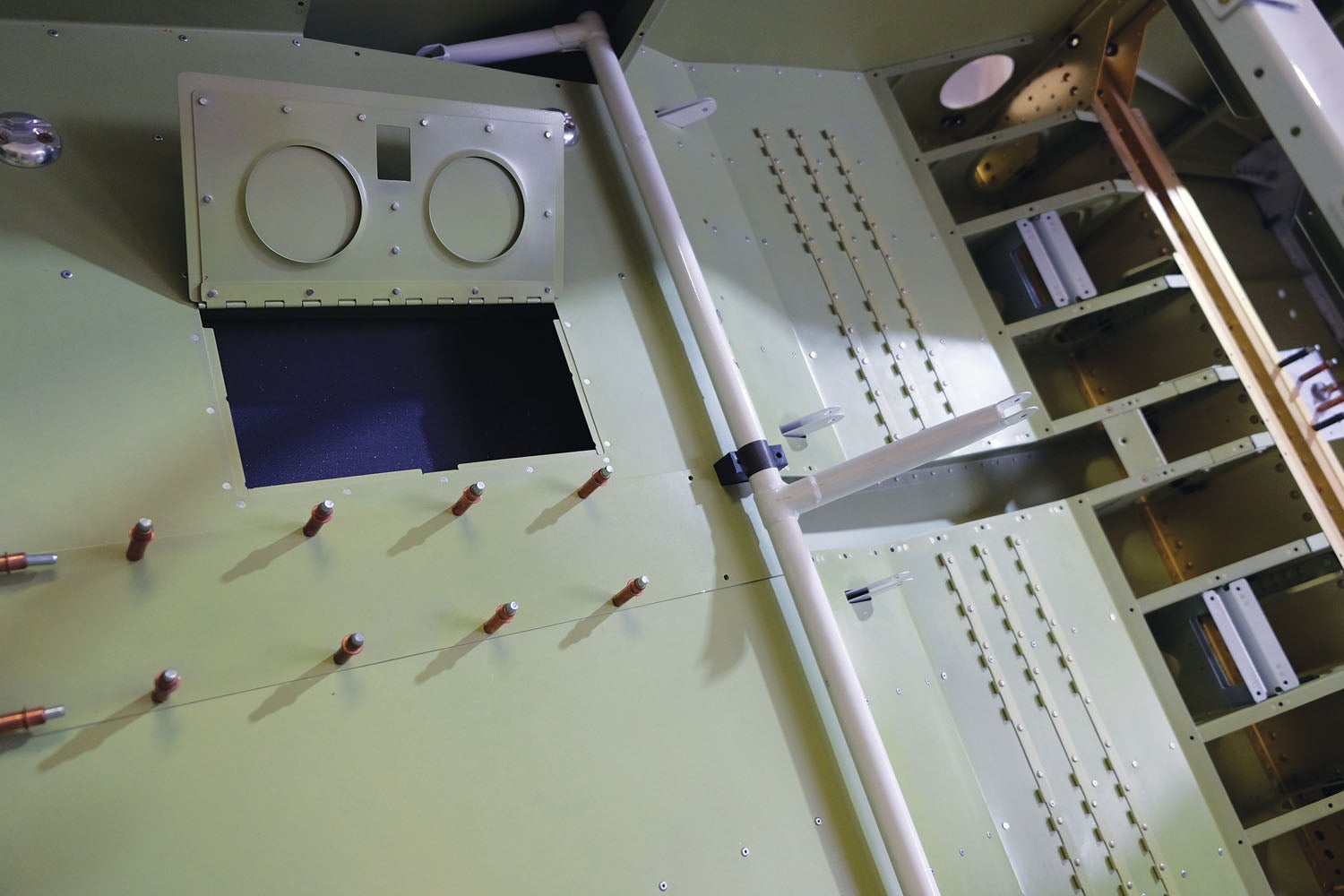
Marco used SolidWorks to design the electrical system, too, with his usual attention to the detail. Being an airshow pilot, he also needed a smoke system, so he produced one himself from the ground up, developing an electronic board that controls the pump and all functions, including the “refill” option, so he can add smoke oil into the smoke tank from the external tank of the airplane, using an iPhone app he also created.
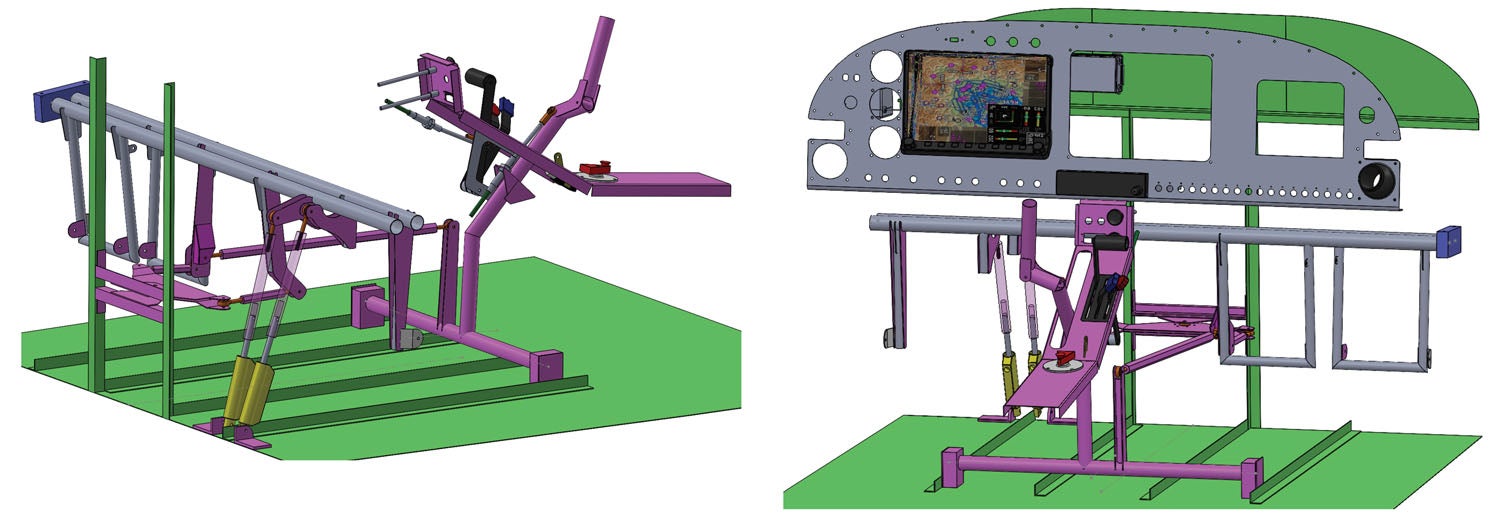
When I asked Marco what was really challenging for him about his building experience, he answered me like any other builder, without any reference to his physical condition. He feels very responsible for all parts and assembly, even the small ones, due to fact that, in the end, you must leave nothing to chance.
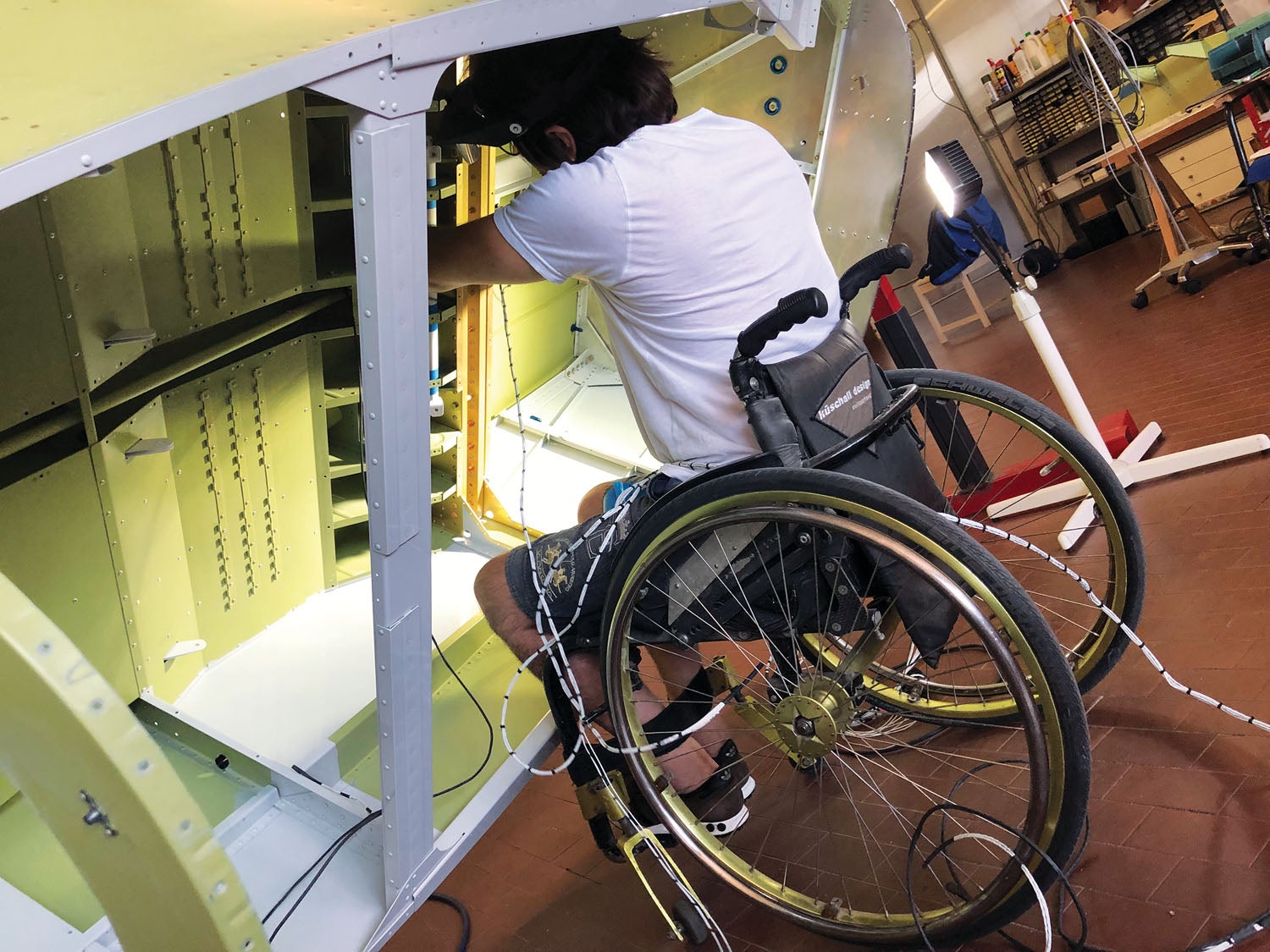
Getting in the Cockpit
Marco arrives at his home airport by car and can open the gate and hangar door with a remote control. He uses a small airplane tug to move the airplane outside the hangar.
He then puts a non-slip blanket on the wing, with the flaps down. Keeping his left hand on the canopy rail and his right hand on the wheelchair, he uses his arms to push himself up from the wheelchair and sits on the wing, facing backward. Next, he takes a small custom step from the plane in order to sit parallel to the fuselage, facing forward. At this point he moves his legs inside the cockpit, sits on the canopy rail and slips into the pilot’s seat. The custom step, the wheelchair with wheels removed, and the non-slip blanket are positioned in the baggage compartment; the Flyboy Accessories Supertracks Canopy Track Extension helps a lot.
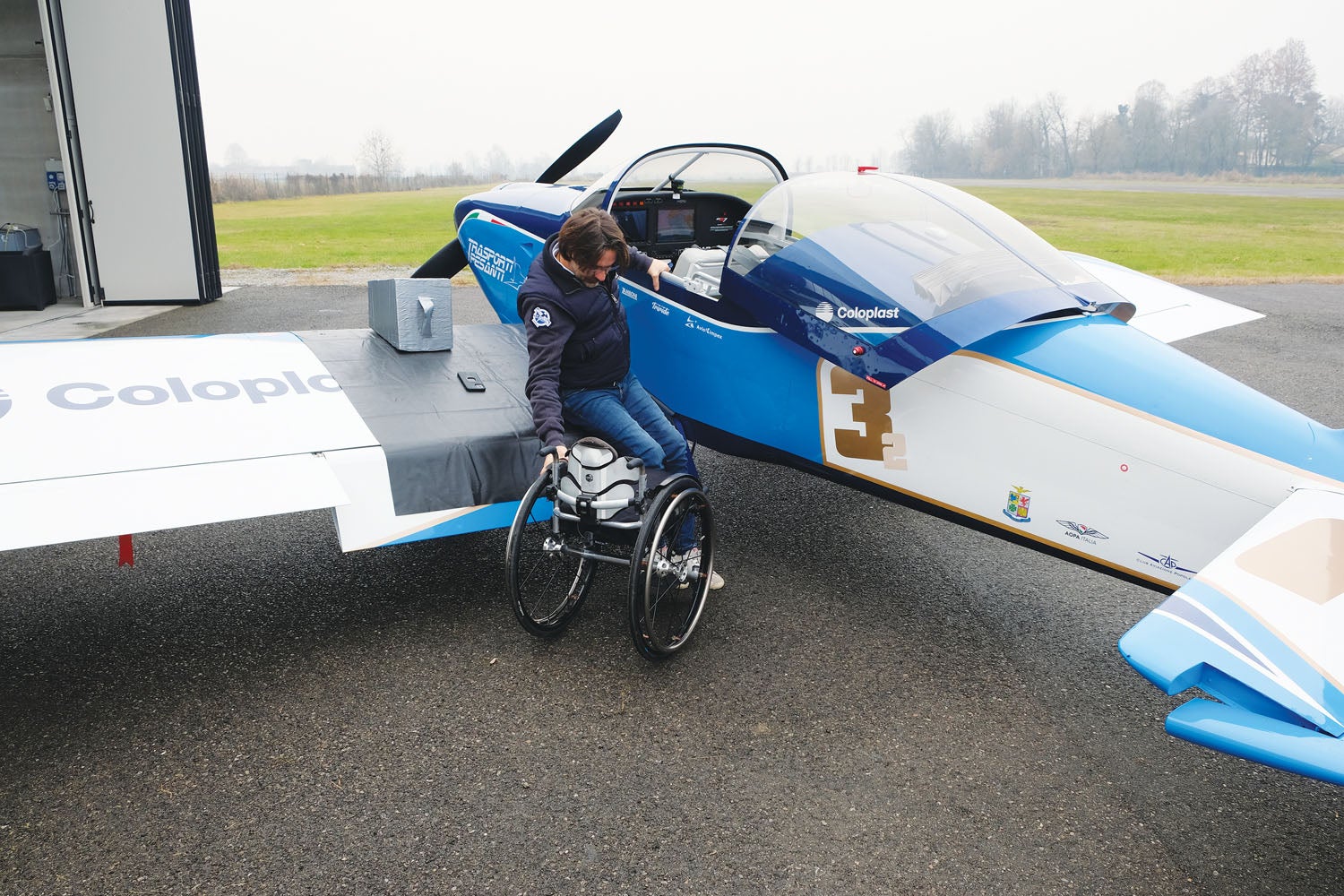
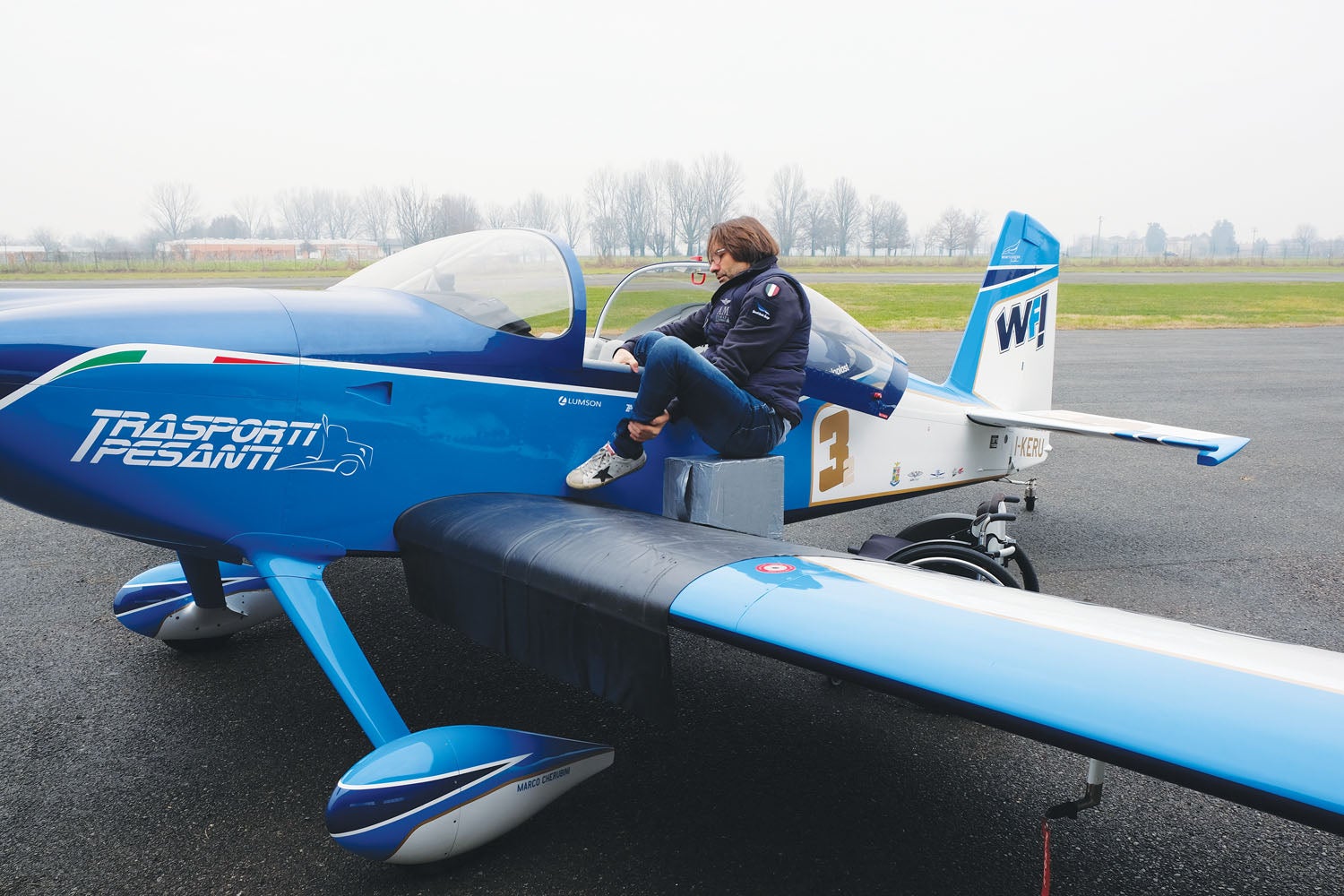
Marco’s Airplane
This RV-7 is powered by a 180-hp Lycoming YIO-360 from Van’s spinning a 72-inch Hartzell constant-speed propeller. The engine is equipped with two P-MAG electronic ignitions, and the battery is an Odyssey PC680, with relays for the master switch and starter. Two TC-X PAR 36 LEDs serve as landing lights in the leading edge of the wings, and the strobe/nav lights are AeroLEDs’ Pulsar Series.
The instrument panel includes one 10-inch Dynon SkyView HDX with an analog backup altimeter and airspeed indicator. There’s also a two-axis autopilot, a remote Dynon 261 transponder and a Garmin GTR-225A com. A round EI Commander monitors and controls the P-MAGs, and a video camera is wired to the EFIS. Traffic information is provided by a PilotAware Rosetta, which has the ability to receive ADS-B, Mode-S, Mode-C and other PilotAware transponders directly.
The switches are on the left side of the panel, and the circuit breakers are on the right. There’s also an iPad that is used as a moving map. A vent exchanger deviates fresh air behind the instrument panel, and it exits on the internal side of the windshield. On the left side of the windshield roll bar, you’ll find an iPhone QUAD LOCK 360 mount.
Being used for airshows, Marco’s RV-7 is equipped with a homebuilt smoke system with a 6-gallon tank. The aircraft’s empty weight is 1162 pounds.
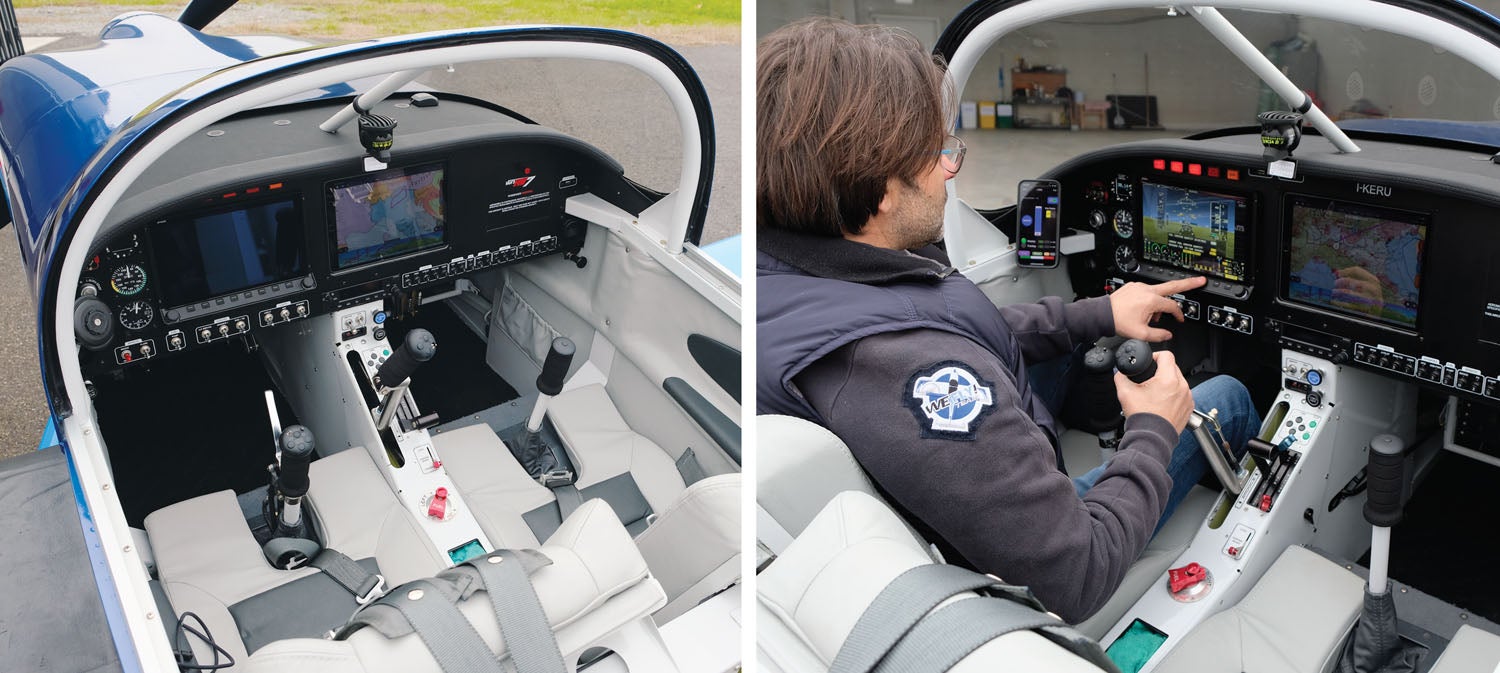
Special Controls
Imagine controlling a taildragger without using your legs. It doesn’t sound easy, but if you think outside the box, it’s actually quite possible. The cockpit is equipped with special flight controls for a disabled pilot in the left seat and standard flight controls for the right seat.
The stick for the left seat is standard, controlling pitch and roll, and there is a handlebar connected to a Bowden cable for applying both brakes. On the stick grip are the trim buttons, push-to-talk switch, autopilot disengage and a flap switch controlled by a relay.
Marco needs to have the tailwheel locked for takeoff and landing, so a small crank on the left side panel locks the tailwheel using a Bowden cable and a pin. Obviously, there is no link between the rudder and the tailwheel.
Rudder movement is made using a vertical lever mounted to the center console, to the right of the left-seat pilot. The lever pivots on a bar attached to the floor with two Teflon bearing blocks (in the same manner as the flap actuator). From here, a rod connects to the rudder pedals. Thanks to a bellcrank installed under the panel, moving the lever forward or backward past 80% of lever travel applies differential braking for taxiing. Forward lever movement is for left rudder action, and backward is for right.
At the top of the rudder lever is a throttle stick that moves left and right for engine power control. The throttle stick connects via a Bowden cable to the throttle control on a three-lever quadrant (Van’s CT 83F Deluxe) that is mounted in the center console. This allows a pilot in the right seat to access the engine controls, too. The push buttons for the smoke pump control are also mounted on the throttle stick. You can see Marco using his special controls during a flight in this video:
On the center console, in addition to the rudder lever and the three-lever throttle quadrant, is an Andair fuel selector, the parking brake, a duplicate set of push buttons for trim and flaps and the cabin heat and alternate air control.
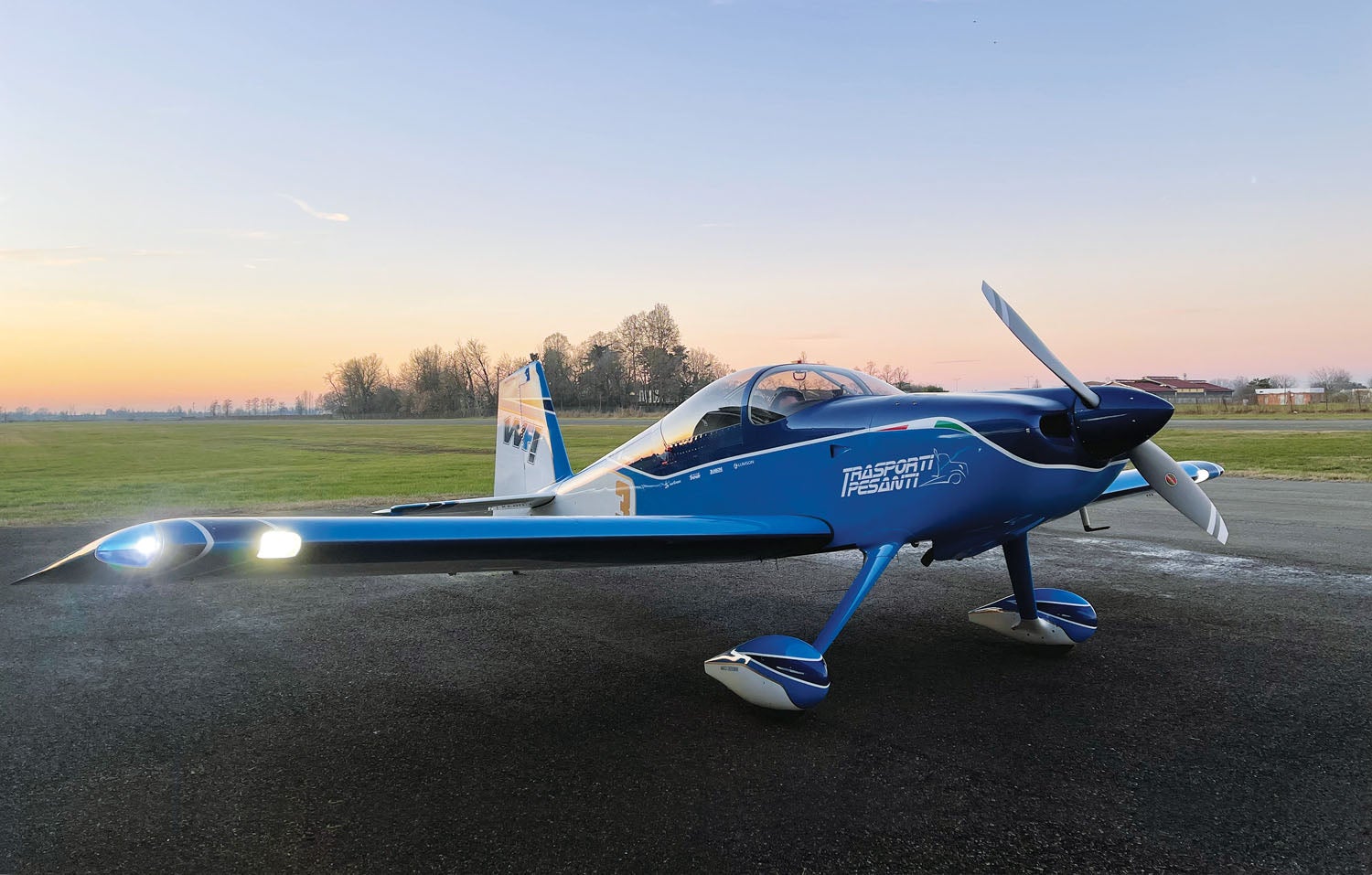
Future Plans
Marco loves flying with friends and gathering with other pilots. Recently, the WeFly! Team added another pilot, Walter Mondani, who completes the group with his RV-7. They will start specific airplane formation training soon to prepare a new set of maneuvers for the upcoming airshows.
Aviation is a blast, airplanes are cool, airplane builders are special and, with a strong mind, every one of them can fly with no limits.* Just like Marco!
*“No limits” is expressed here as a personal concept. Obviously, everything must be conducted with full consideration of the rules, personal skills and limitations of the planes and people involved—as is expected in the aviation world.













